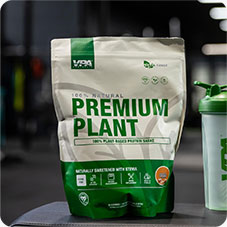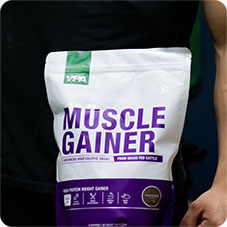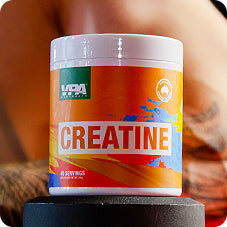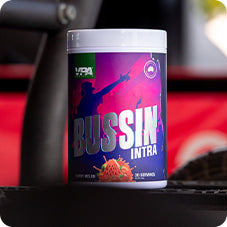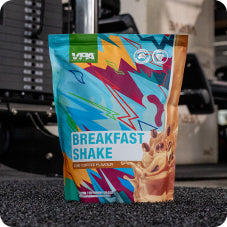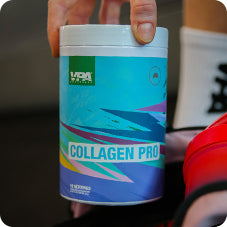Your Cart is Empty
Flexibility Development for Athletes: Key Strategies and Benefits
January 08, 2024 4 min read

Flexibility is a crucial component of athletic performance. Whether you're a professional athlete or simply someone who enjoys staying active, flexibility plays a pivotal role in preventing injuries, enhancing mobility, and improving overall athletic performance. In this article, we will explore the importance of flexibility for athletes and provide key strategies to help you develop and maintain flexibility effectively.
Benefits of Flexibility Development
Flexibility is of paramount importance for athletes due to its numerous benefits that directly contribute to improved athletic performance and overall well-being.
Here are several key reasons why flexibility is crucial for athletes:
- Injury Prevention:
Maintaining good flexibility helps athletes prevent injuries. When muscles and joints have a full range of motion, it reduces the risk of strains, sprains, and other injuries that can occur during physical activities. Flexible muscles are less likely to tear or overextend.
- Improved Range of Motion:
Many sports require athletes to move their bodies through a wide range of motion. Whether it's kicking a soccer ball, reaching for a high bar in gymnastics, or executing a powerful golf swing, adequate flexibility in the relevant muscles and joints is essential for optimal performance.
Learn more about mobility tips.
- Enhanced Muscle Function:
Flexible muscles can contract and relax more efficiently, leading to improved muscle function. This improved muscle function can translate into increased speed, strength, and power during athletic activities.
- Recovery and Reduced Muscle Soreness:
Engaging in flexibility exercises, such as stretching, can help reduce muscle soreness after intense workouts or competitions. By promoting blood flow to the muscles and aiding in the removal of waste products, flexibility exercises can expedite the recovery process, allowing athletes to train more consistently.
- Balance and Stability:
Flexibility plays a role in balance and stability. Athletes who have good flexibility can maintain better control over their bodies, reducing the risk of stumbling or falling during sports that require balance, such as gymnastics, figure skating, or martial arts.
- Posture and Alignment:
Proper posture is essential for athletes, as it not only reduces the risk of injury but also optimises biomechanics. Flexible muscles and joints contribute to better posture and alignment, which can enhance an athlete's performance by improving breathing, reducing energy waste, and maintaining optimal body positioning.
- Agility and Quickness:
Flexibility is linked to agility and quickness in sports. Athletes with greater flexibility can change direction more smoothly and efficiently, giving them an advantage when it comes to evading opponents, making sharp cuts, or reacting swiftly to game situations.
- Longevity in Sport:
As athletes age, maintaining flexibility becomes even more critical. Flexible joints and muscles can help prolong an athlete's career by reducing the risk of age-related injuries and preserving overall physical function.
Developing flexibility: Where to begin
Developing flexibility is a gradual process that requires consistency and patience. Whether you're an athlete looking to improve your performance or someone seeking greater overall flexibility and mobility, here's a step-by-step guide to get you started:
-
Begin by defining your goals
Determine what specific areas of your body or which muscle groups you want to improve flexibility in. Having clear objectives will help you track your progress and stay motivated.
-
Warm-Up Properly
Before you start any flexibility exercises, it's essential to warm up your muscles. A warm-up can consist of light aerobic activity (e.g., jogging in place or jumping jacks) for 5-10 minutes to increase blood flow and raise your core body temperature. This helps make your muscles more pliable and less prone to injury.
-
Incorporate Stretching
There are various types of stretching exercises that can help improve flexibility. Here are some common ones:
Static Stretching: This involves holding a stretch position for a set period (usually 15-30 seconds). Focus on major muscle groups like the hamstrings, quadriceps, calves, and shoulders. Remember not to push yourself to the point of pain; aim for a gentle stretch.
Dynamic Stretching: Dynamic stretches involve controlled, repetitive movements that take your muscles and joints through their full range of motion. Examples include leg swings, arm circles, and walking lunges. Dynamic stretching is often used as part of a warm-up routine.
PNF Stretching: Proprioceptive Neuromuscular Facilitation (PNF) stretching involves contracting and relaxing the muscles being stretched. It's typically done with a partner, but can also be adapted for solo practice.
Yoga and Pilates: These practices combine stretching with strength and balance exercises, helping to improve flexibility, mobility, and overall body awareness.
-
Consistency is Key
Flexibility gains are achieved through consistent practice. Aim to incorporate flexibility exercises into your daily or weekly routine. Even a few minutes of stretching every day can make a significant difference over time.
-
Progressive Overload
As your flexibility improves, gradually increase the intensity and duration of your stretches. You can deepen your stretches or hold them for longer periods of time. This progressive overload principle helps your body adapt and continue to make gains.
-
Listen to Your Body
Pay close attention to your body while stretching. Stretch to the point of mild tension, not to the point of pain. Pushing yourself too hard can lead to injuries or decreased flexibility.
Keep hydrated and incorporate a balanced diet as this can help keep your muscles and connective tissues healthy, which is crucial for maintaining flexibility.
-
Include Recovery Techniques
Techniques like foam rolling or self-myofascial release can help release muscle tension and improve flexibility. Incorporate these into your routine as needed.
-
Seek Professional Guidance:
If you're new to flexibility training or have specific goals or limitations, consider consulting a fitness professional, physical therapist, or a certified yoga/Pilates instructor. They can provide you with more personalised guidance and take away the guesswork when beginning your flexibility journey as well as ensure you're performing the stretches correctly.
Flexibility Development Blueprint
We proudly recommend one of our VPA partners, Unity Gym, for their Flexibility Development Blueprint and Masterclass. This is a perfect start to your fitness regimen building up to your fitness goals whether it be for weight loss, muscle building, or endurance.
Bottomline:
Flexibility development is an essential aspect of athletic training. It not only reduces the risk of injuries but also enhances athletic performance by improving range of motion, muscle function, and posture. By incorporating dynamic stretching, static stretching, yoga, Pilates, foam rolling, and maintaining consistency in your flexibility training routine, you can unlock your body's full potential and excel in your chosen sport. Remember to always prioritise safety and listen to your body to achieve the best results.
Also in Training

Mastering the Pull-Up
May 01, 2024 4 min read
Learn how to master the pull-up with tips on proper form, breath control, and variations for every level. Also discover the importance of warm-up, muscles engaged, and getting a personal trainer.
Read More
Building a Champion: Why Cardio and Strength Training are Your Fitness Dream Team
April 26, 2024 5 min read
Discover the power of combining cardio and strength training for optimal fitness results. Learn how to structure your workouts, fuel your fitness journey, and embrace the training journey. Check out VPA's training tips and more in our latest blog post.
Read More
Beyond the Six-Pack: Building a Strong Core for Everyday Life
April 23, 2024 5 min read
Discover the power of your core with expert tips and exercises to improve strength, posture, and stability for everyday activities.
Read More Recent Articles
- Mastering the Pull-Up
- Building a Champion: Why Cardio and Strength Training are Your Fitness Dream Team
- Beyond the Six-Pack: Building a Strong Core for Everyday Life
- Routine and Discipline – The Backbone of Fitness
- Calisthenics for Beginners
- Running Cadence: The Key to Efficient Running and Injury Prevention
- Pilates: A Guide for Beginners
- What is DOMS? A guide to relieving sore muscles.
- Flexibility Development for Athletes: Key Strategies and Benefits
- Active Recovery for Rest Days





